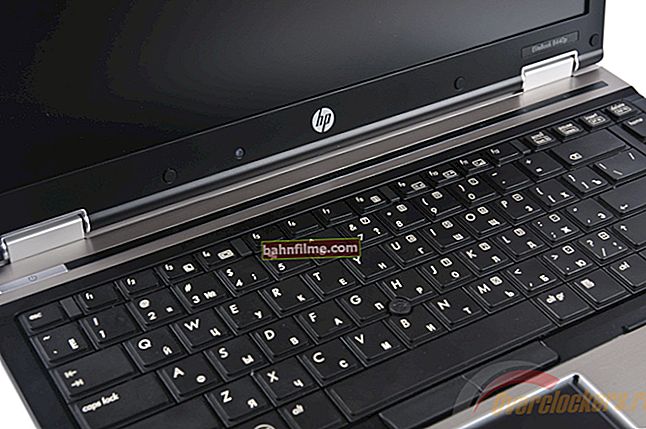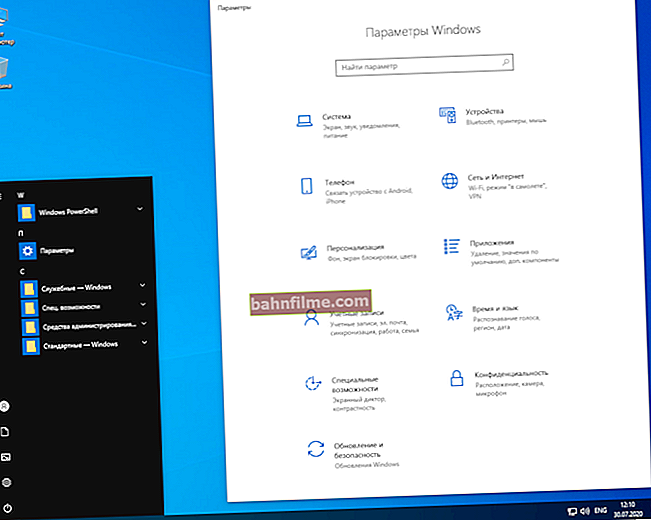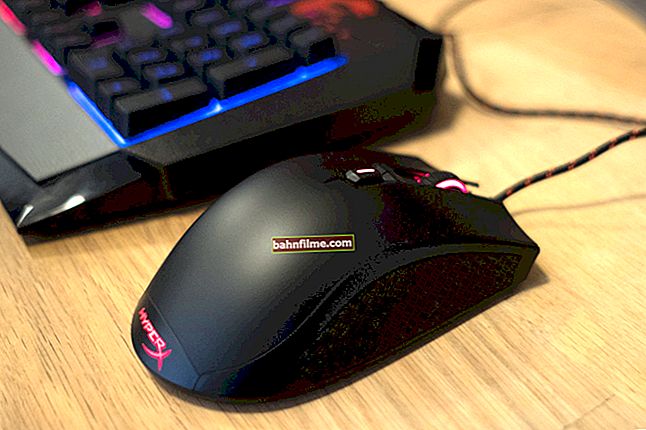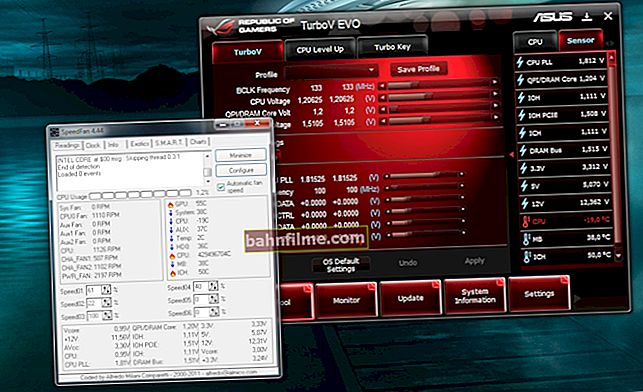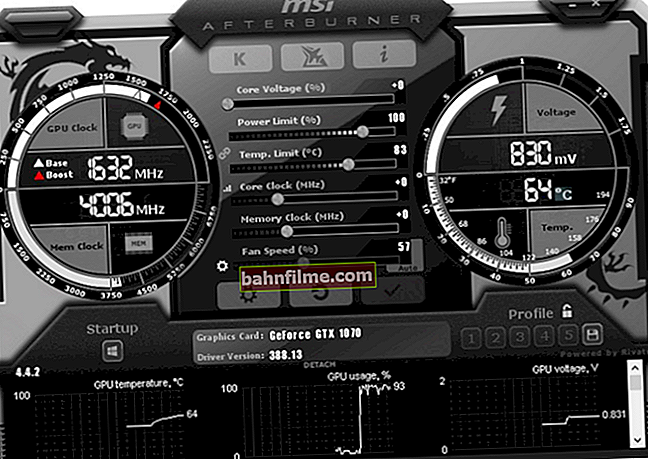
User question
Hello!
Tell me with one problem. I have an ISO image that is 4.38 GB in size. I need to write it down to a USB stick, but it won't fit. Is it possible to somehow compress the ISO image, at least by 300-400 MB?
The rest of the question is cut out as not informative ...
Hello.
Well, first of all, I want to warn everyone at once that compressing an ISO image like a picture (10 times, for example) is unlikely to work.
Secondly, one cannot say anything definite about the compression ratio - some images can be compressed by as much as 20-50% (and sometimes even more), others only by 2-3%. Much depends on what files are in it: if there are a lot of documents, text files, etc. - then the compression ratio can be significant; if, for example, already compressed-compressed installation files, then it's good if there are 1-2% ...
Okay, be that as it may, I will give several options for solving the question, but which one is better in your case - it will be possible to say only after the experiment ... 😉 Try each one.
Ways to compress an image (including ISO)
❶ Option 1: using archivers
Perhaps this is the most obvious and simplest way to compress something, including images (and the compression ratio can be quite significant!). However, when compressing an image using this method, there is one significant drawback - in order to use it (for example, mount it into a virtual drive), you will first need to extract the file from the archive (which may take time, especially if the file is large).
To help!
Free archivers for Windows - the most convenient programs - //ocomp.info/arhivatoryi-analog-winrar.html
As an example, I took one of my ISO images (in which I store several folders with documents, and a couple of installation files). Its size is ~ 198 MB (see the screenshot below).

Original file
For archiving, I used WinRAR (I think many people have this program on their PCs, so you don't even need to search for anything ...).
Note: to compress, just right-click on the image file, and in the context menu, select the "Add to archive" option, see the example below.

Add to archive (using WinRAR)
Next, specify the archive format (for example, RAR), the compression level (I recommend the maximum), and click OK.

Compression Method - Maximum
In general, after the completion of archiving, you will receive a regular archive (inside which there will be an image). In my case, the file has become about 4 times smaller (see the screenshot below.)!

Was 198 MB, now 48 MB
Of course, you can choose other archivers and formats to increase the compression ratio. For example, the same 7z in some cases shows a higher compression ratio (you can still win 3-10%!).
❷ Option 2: edit the image and remove all unnecessary from it
Another way to drastically reduce the size of the image is to remove some of the information from it (for example, some documents might be outdated, some of the files you simply don't need, etc.). To do this, you need to use the special. programs (for ISO images I recommend choosing UltraISO).
I will show my example below in UltraISO.
And so, we launch the program, and open our image (which we want to reduce by removing some data from it).

UltraISO - Open file
Further, all the files that are on the ISO will appear in the UltraISO editor as in a regular explorer. Those. they can be easily removed in 1-2 mouse clicks (see example below). For example, I just right-clicked on one of the folders, and then I selected "Delete" .
Note: I note that in addition to deleting, you can add something. For example, delete some files, add others.

Remove some files from ISO
After editing the ISO image is completed, click on the menu "File / Save As" (example below), specify the location on the HDD where you will save the new ISO file.

Save As (UltraISO)
In general, the editing can be considered complete at this point. The new ISO file can be much smaller than your original file (it all depends on how many files you delete from it).

The size of the new ISO image has become much smaller!
❸ Option 3: use spec. software that can convert ISO to other compressed image
This method is not as effective as the previous ones, but when using it there are two indisputable advantages:
- we do not remove any files from the image;
- the image can be easily and quickly mounted into a virtual drive and started to be used (you must admit, this is much faster than extracting it from the archive first).
I'll show you a couple of ways ...
Method 1: UltraISO
We use the same UltraISO. 👍
1) Open the ISO image in UltraISO that we want to compress (no screen, it's easy).
2) Go to the tab "Instruments" and click on the function "Convert" .

UltraISO - tools, convert
3) Choosing a format "Compressed ISO (ISZ)" , and click on the button "Convert" .

Compressed ISO
4) Next, you need to wait until the end of the operation. As a rule, compression is fast enough (in any case, not slower than the archiver works).

Compression process
5) Done! The compressed image (in ISZ format) weighs 2.5 times less than the original one (this is so in my case, in yours - the numbers may be different 😒).

Difference in size between normal and compressed ISO
Method 2: Virtual CD
Virtual CD is a multifunctional imaging program (it supports more than just ISO). In her arsenal there is such a useful option as image compression. This can be done by converting it into a special format that is executed only by Virtual CD. Note that the program supports 4 compression levels.
Let's get down to business (screenshots were made from the version of Virtual CD v.10.7). And so, first you need to insert our ISO into the virtual drive: since The Virtual CD is embedded in the explorer, it is done very quickly and easily (see screenshot below).

Insert ISO into virtual drive
Next, you need to open the main window of the Virtual CD program, and right-click on the virtual disk drive with ISO - in the menu that appears, select "Create Virtual CD" .

Create virtual CD
Then go to the tab "Destination" and indicate the degree of compression of the image (I recommend setting the maximum, at the moment it is 4). Then click on the button "Create" and wait until the end of the operation.

Set the maximum compression level - i.e. 4th level
Compression ratio (overall) similar to UltraISO. But in terms of use, in my opinion, Virtual CD is better embedded in Windows, allowing you to quickly operate on images ...

Was 198 MB, now 75 MB (compressed image in Virtual CD)
❹ Alternative 👀
If you do not have enough space on a flash drive / disk to write an image, then it is not at all necessary to compress it, you can simply split it into pieces of a certain size. For example, you need to transfer a file on a flash drive (4 GB in size), the size of which is already 7 GB. How to do it?
Yes, just split this file into 2 pieces of 3.5 GB, for example. Then write down and transfer first one piece, then another. Or use two 4 GB flash drives / disks. What is not an alternative ?!
To help!

How to split a large file into parts (into pieces), otherwise it does not fit on a USB flash drive (disk) -//ocomp.info/kak-razbit-bolshoy-fayl.html
Breakdown can be done easily and simply using the same archiver (this option is available in most popular archivers, for example, in WinRAR).
To use it, start creating an archive, and in the options select "Divide into volumes of size ..." (see example below). Please note that all the most popular sizes are already included in the templates, for example, 700 MB (for CD), 4481 MB (for DVD), etc.

Divide into volumes of size ...
After creating a split archive, your final file will consist of several parts, the size of each part will not exceed the specified in the settings.
Note: to extract a compressed file from such an archive (split into parts) - you need all these parts. If you copy and transfer only one part of the archive to another PC, then you will not be able to extract any data from it!

As a result, 2 files, the size of which does not exceed 100 MB
PS
If you want to shrink your Windows ISO image to burn it to DVD, I recommend you pay attention to one point. Most likely you have an image stuffed with all sorts of programs, add-ons, etc."pieces" (and, probably, this is some kind of assembly). Now, modern Windows 10 can be downloaded officially from the Microsoft website, and the size of this image will be up to 4 GB (just enough for burning to a DVD or small flash drive). You can find out how to do this here - //ocomp.info/kak-skachat-win10-legalno.html
*
Add-ons are welcome ...
Good luck! ✌
